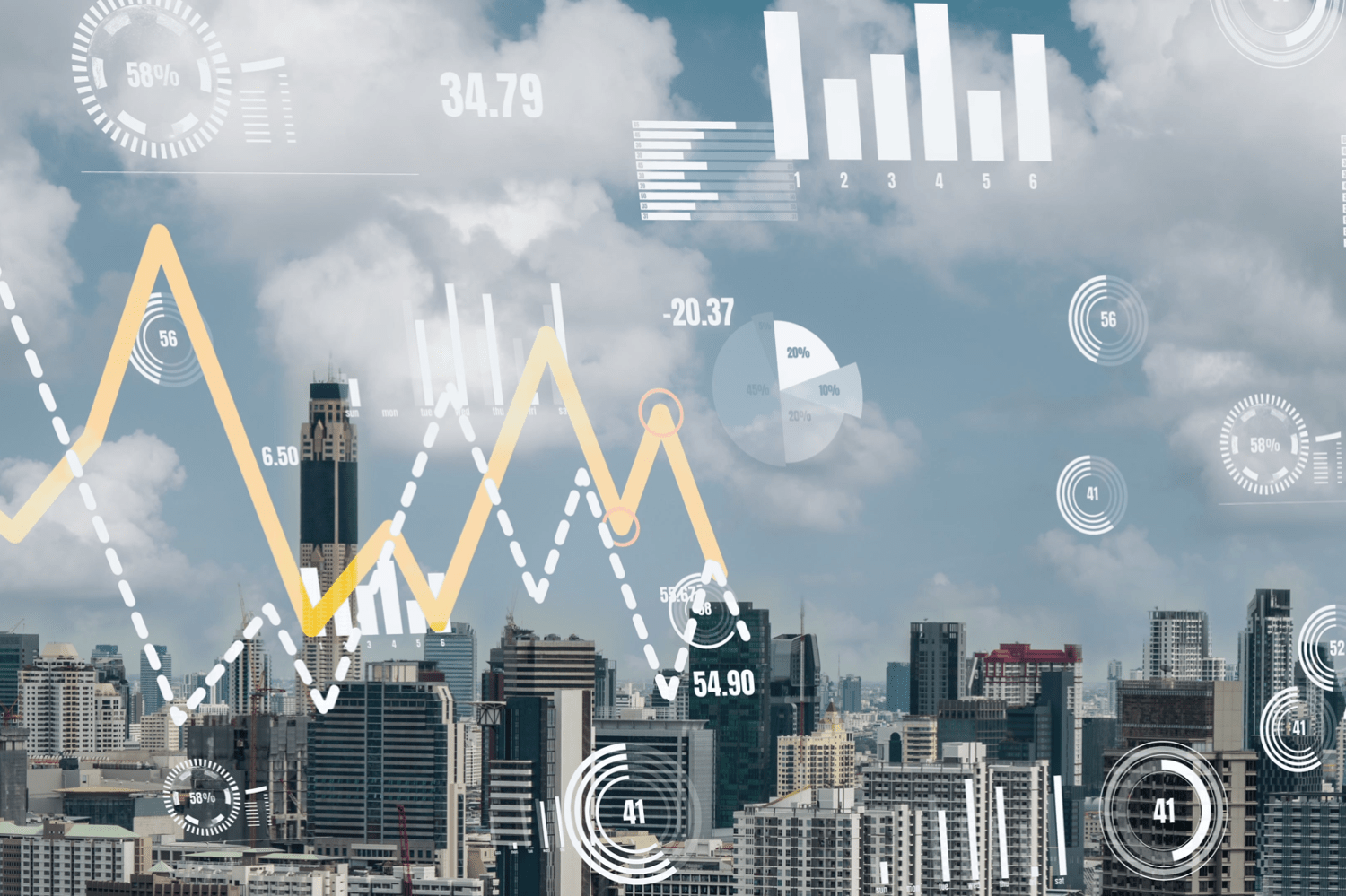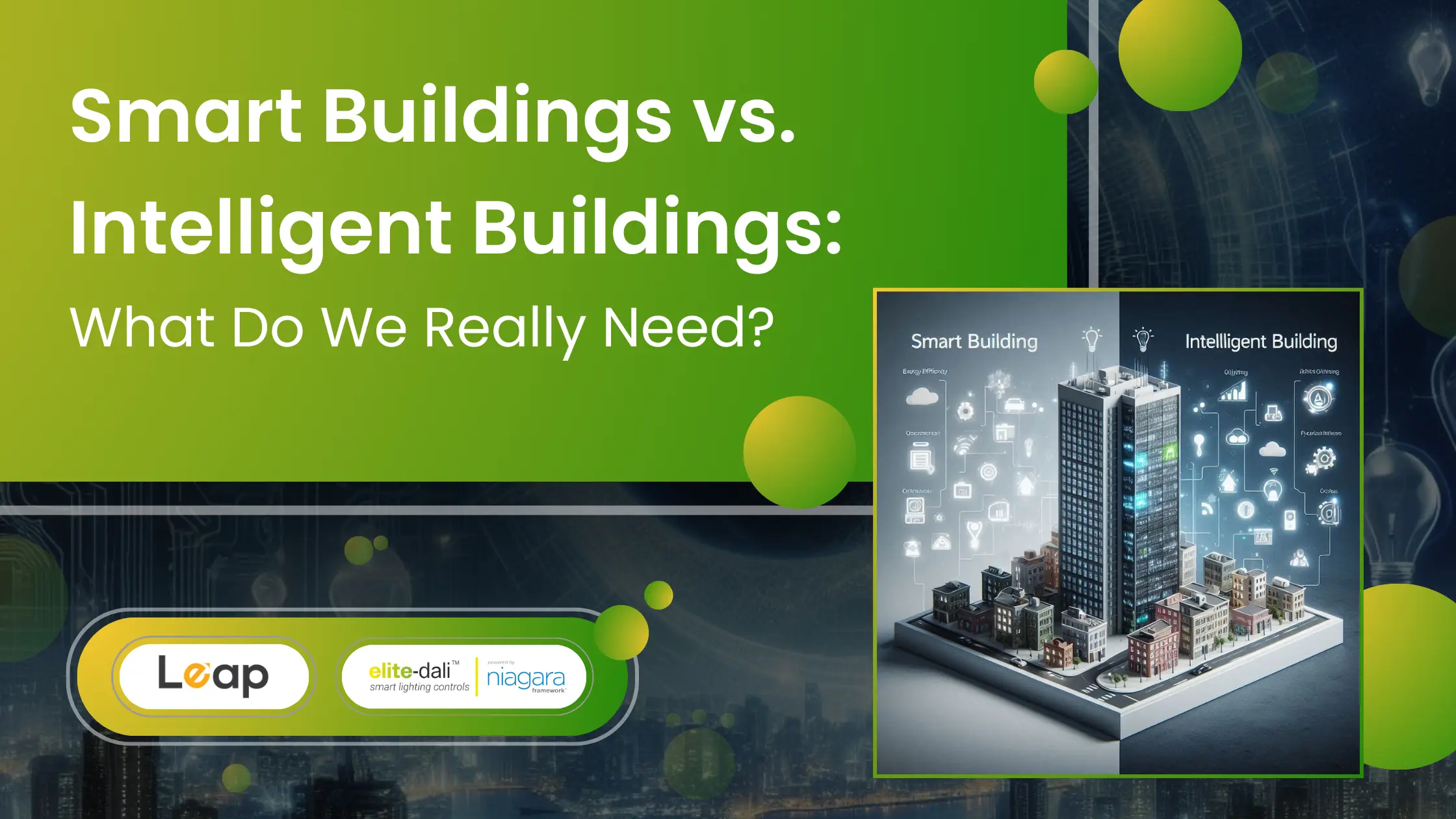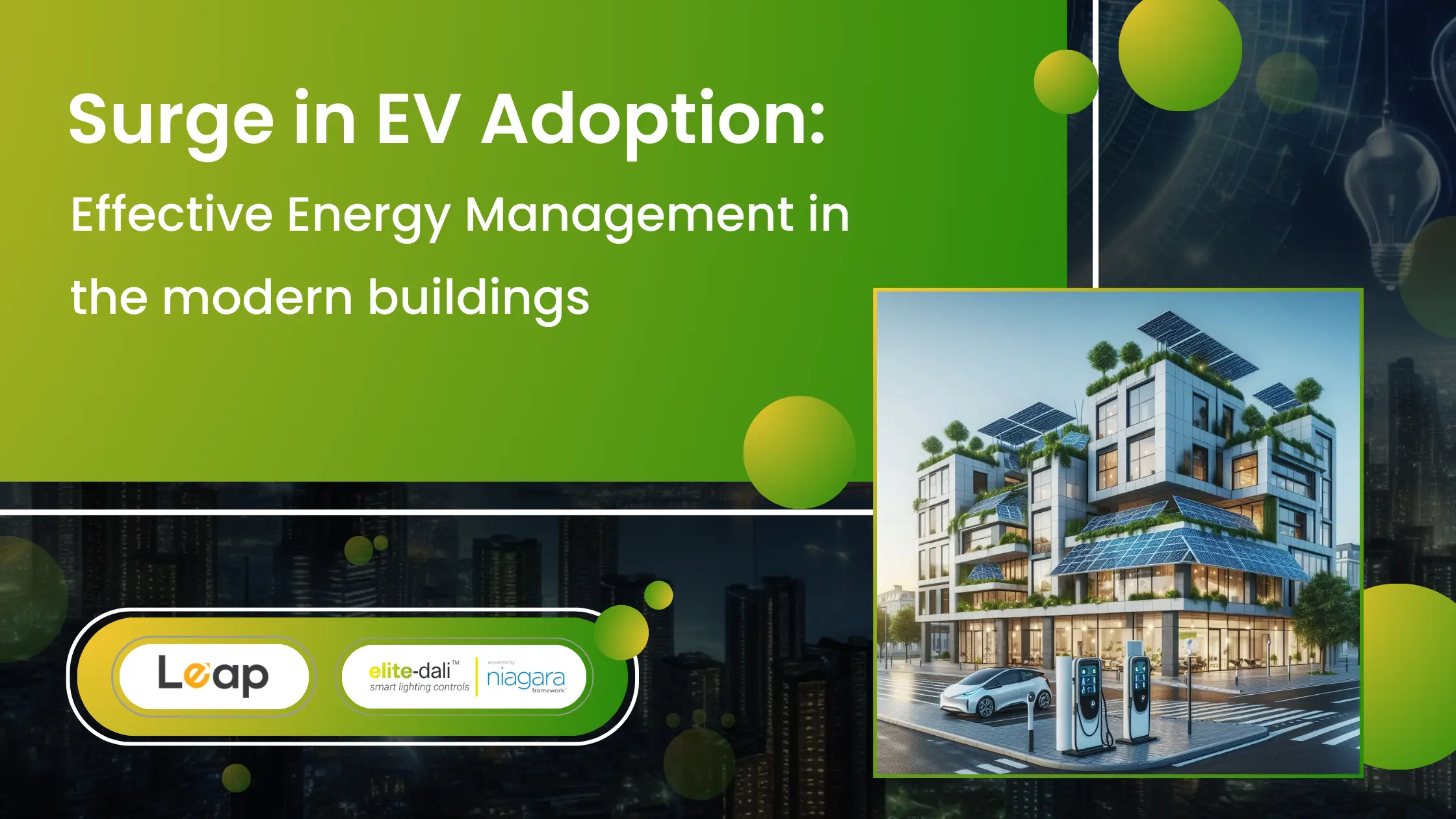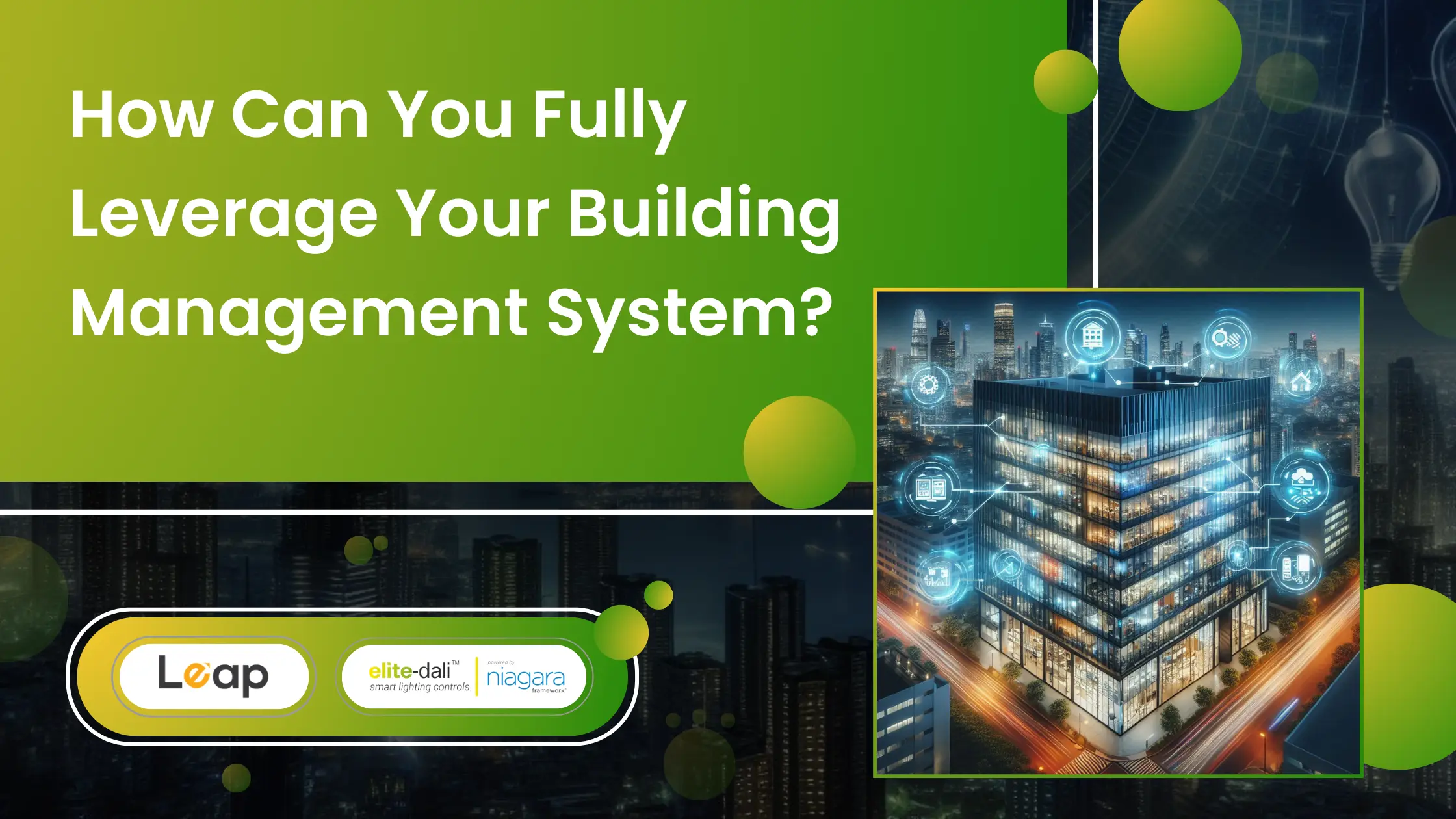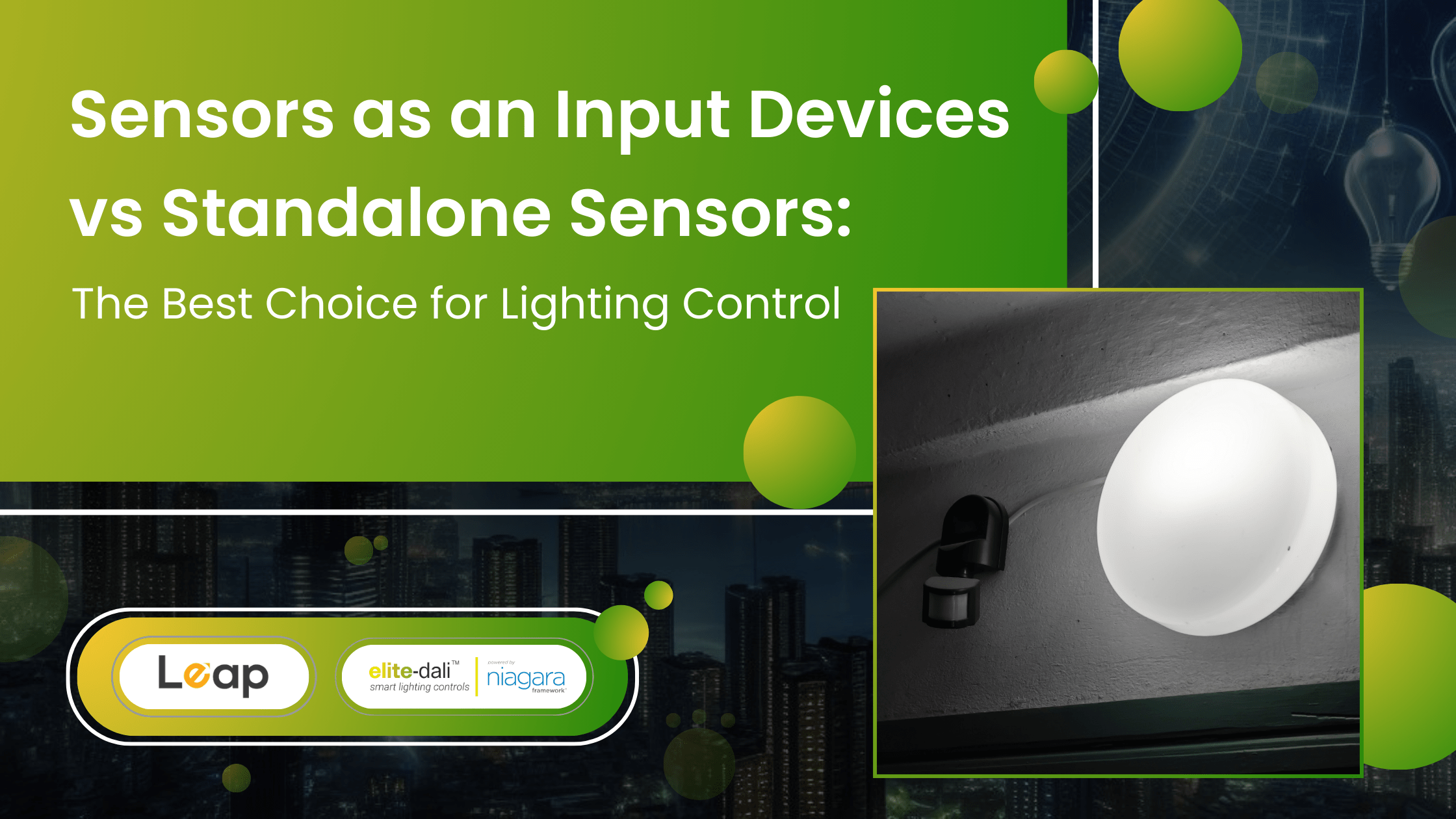Exploring The Concept Of Smart Connected Buildings
When you talk about smart connected buildings, three things that automatically come to mind are automation, communication, and energy efficiency. While these three, in a nutshell, are the biggest benefits of having connected buildings for commercial use, they are somewhat unable to justify the impact that smart buildings can have on business. Similarly, the installation of niche smart products is definitely part of the whole smart building concept, but there is much more to it which is not clearly explained to potential users.
In this blog, we shall describe what a connected building actually is, what are its important components, and how lighting automation fits in the idea of a smart building.
Table of Contents
What Are Smart Connected Buildings?
21st-century innovations are all about finding possibilities in existing solutions. As more and more daily use equipment and structures were being empowered with advanced technical abilities, there was a growing consensus that a modern-day building should not remain as a mere basic shelter framework only. A place where employees spend almost 12 hours every day or where people reside for their entire lives, should definitely offer more to make lives convenient. This premise was the single big triggering factor for the evolution of Smart Buildings. Today, a smart connected building is informally defined as a living organism that houses more living organisms within its vicinity.
The term connected is worth paying attention to. Automation has been introduced in many industries and services individually till now. However, since every individual desires to use all of these in his daily affairs, there needs to be a standard framework that brings everything under one roof. A place where people spend most of their time is surely the most suitable place for such amalgamations. Keeping this in mind, the concept of smart connected buildings solutions got shaped in its entirety.
Components of Smart Connected Buildings
● IoT Sensors
Internet of Things is the technology that allows developers to make everyday equipment eligible for communication. This communication is particularly beneficial for its remote operation, controls and management. The IoT technology works based on special sensors called the IoT sensors. These sensors record and transmit real-time data to a computer processor, which is generally the access point created for a building. Data related to temperature, humidity
light, motion, etc. is generally used here.
● User Interface
The ease of communication between the processing software and the user is determined by the user interface. In a connected building setup, automation facilities whose software has a favorable user interface are more readily used than the others. On a commercial level, building data can be huge. Thus, the processing software should support lesser complexity.
● Building Management Software
The Building Management Software is the brain of a smart connected building. It is the control center for various building automation services, from HVAC control to lighting automation. A successful building management software needs to perform data processing rapidly, and should also support a diverse set of services too. It must be easy to integrate new services that users find beneficial to the existing solution. All in all, the BMS is the center of action in a smart building.
● Connectivity
Finally, there should be a means to establish connectivity between systems as well. Internet connections that are secure, uninterrupted, and have no bandwidth constraints are desirable to keep a building connected. Cellular and WiFi-based networking options can be explored to support good connectivity.
Contribution of Lighting Automation In A Smart Building
At the beginning of this blog, we discussed how ‘smart’ building solutions have three main objectives. All of these are quite convincingly fulfilled by lighting automation systems as well, justifying their inclusion in the smart building concept. Lighting automation and control is a big-time energy saver in commercial settings and cuts down operational costs significantly. The convenience and productivity benefits are noteworthy too. Imagine a hospital setup where it takes the nursing staff too much time to find medical equipment and then use it. Bluetooth transceivers can be embedded in lighting systems to help in locating and tracking equipment for faster usage.
Another example of how lighting control data helps in creating a smart building setup with good management is by utilizing occupancy data. Occupancy data analysis can help floor staff like janitors to plan their routine efficiently. Areas that are not occupied during certain hours of the day would be completed in a particular shift and then the other areas can be cleaned too. These are small yet significant contributions that lighting control automation can have on making a building truly ‘smart’.
elitedali: Bringing Lighting Control Closer to Smart Buildings
Building Management Systems (BMS) usually do not have a lighting control panel by default. But as we saw earlier, lighting automation is absolutely necessary for a commercial space. So, elitedali decided to bridge the gap between BMS solutions and lighting automation in the most feasible way. Our services help all BMS’ based on the Niagara Framework to be empowered with lighting control panels without needing complex third-party software purchases. Furthermore, we offer vendor-agnostic solutions that help in integrating all compatible luminaires with the BMS irrespective of their manufacturer.
To know more about an ensemble of services that we provide, reach out to us today.


